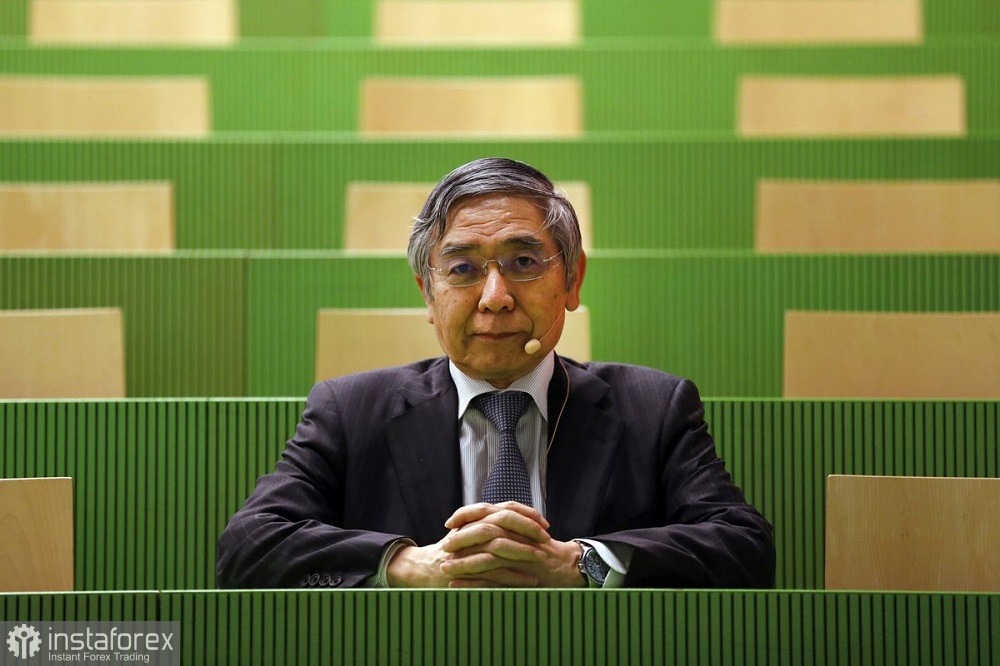Following the results of the December meeting of the Bank of Japan, the dollar-yen pair collapsed to the base of the 132nd figure, thereby updating four-month lows. In just a few hours, the bears strengthened their positions by 500 points, moving further away from the peak of 2022 (151.96). And here, it is important to understand that today's USD/JPY dynamics is not a momentary success of the yen. Most likely, we are dealing with the first signs of a protracted downward trend, the final stop of which is located around the 110–115 marks.
On the one hand, this is a rather long way: sellers of the pair need to overcome more than 2,000 points. But on the other hand, we should not forget that the yen against the dollar is highly volatile—for instance, the buyers of the USD/JPY made an impressive advance of 3,700 pips upwards within just seven months this year, rising from 115.00 to the 152nd bar. Therefore sellers can reach the 110–115 price area for the foreseeable future, in the first quarter of 2023, if the Japanese regulator will continue to show its character.
It is also worth recalling that the current term of Bank of Japan Governor Haruhiko Kuroda will expire in April next year. This is his second term in office, so he a priori will not be able to stand for re-election. This fact will fuel interest in the yen in the background, as traders will be waiting for revolutionary changes in the policy of the central bank.

However, certain and very unexpected changes are already taking place under Kuroda's tenure. The very fact that the hawkish shift comes from a "hard dove" doubles the pressure on USD/JPY (although, of course, it is only a psychological factor).
So, at the end of the December meeting of the Bank of Japan, the regulator surprised traders with an unexpected adjustment in its parameters for controlling bond yields, allowing long-term interest rates to rise by a large amount.
Recall that previously the target level of 10-year government bond yields was zero: the Bank of Japan did not allow it to deviate more than 25 basis points higher or lower. But now the range has doubled: the Japanese regulator will allow a 50-point deviation from the zero mark.
Markets reacted violently to the results of the December meeting of the Japanese central bank. In particular, the Nikkei index fell by 2.5%, and the dollar against the yen fell by almost 3% in a few hours, to a 4-month low. The yield on 10-year Japanese government bonds briefly jumped to 0.460% (thus approaching the new "permissible" limit).
Note that today's decision of the Bank of Japan is actually a minor shift in the policy of the Japanese regulator. But it can be compared to a tectonic shift, when the millimetric movement of plates can provoke not only an earthquake, but a series of aftershocks. These are the aftershocks we are seeing today in the financial markets.
Obviously, the increased demand for the yen was provoked not by the fact of the expansion of the range of fluctuations of 10-year JGB yields. According to a number of analysts, this is only the first step, which indicates the readiness of the Japanese central bank for further "hawkish" decisions in the foreseeable future. This assumption is also fueled by the fact that Kuroda, who reiterated his mantra today that he "will not hesitate to continue easing monetary policy if necessary," is guaranteed to leave his position in four months.
In today's news feeds, you can often find the phrase that the Bank of Japan made a completely unexpected decision that shocked the markets. But it's not. Or rather, not quite so. Certain prerequisites for such a decision began to appear at the end of autumn. For example, in November, traders heard hawkish signals from a representative of the Japanese regulator: Asahi Noguchi announced the readiness of the Bank of Japan to revise the ultra-loose monetary policy if inflation indicators turn out to be "too high." He called the move a "preventive measure" to curb inflation growth.
Kuroda also veiledly made it clear that the regulator could theoretically consider the option of exiting the ultra-loose policy. And although none of the representatives of the Bank of Japan really announced the expansion of the range of fluctuations in the yield of 10-year JGB, there were still certain hints of a hawkish nature. Another issue is that most traders did not expect the Japanese regulator to take the first step this year. Here is a truly hawkish surprise.
Note that the consequences of the December meeting of the Bank of Japan will be felt for a long time. Many currency strategists are already predicting a "bright future" for the Japanese currency. For example, according to HSBC economists, the yen will strengthen throughout next year. They assume that the upward pressure on USD/JPY from the yield differential will end when the Fed stops raising rates. At that time, the Bank of Japan (probably no longer under the leadership of Kuroda) may change its policy towards tightening, putting strong pressure on the USD/JPY pair.
From the technical point of view, there are no obstacles for the price decrease at least to 131.00. On all higher timeframes (from H1 and above), the pair is either on the bottom line of the Bollinger Bands indicator, or between the middle and bottom lines, which indicates the priority of the downward direction. On the D1 and W1 timeframes, the Ichimoku indicator has formed a bearish signal. This signal is similarly indicative of bearish sentiment. The nearest support level is on the bottom line of the Bollinger Bands on the weekly chart, which corresponds to the target of 131.00.
 English
English 
 Русский
Русский Bahasa Indonesia
Bahasa Indonesia Bahasa Malay
Bahasa Malay ไทย
ไทย Español
Español Deutsch
Deutsch Български
Български Français
Français Tiếng Việt
Tiếng Việt 中文
中文 বাংলা
বাংলা हिन्दी
हिन्दी Čeština
Čeština Українська
Українська Română
Română

